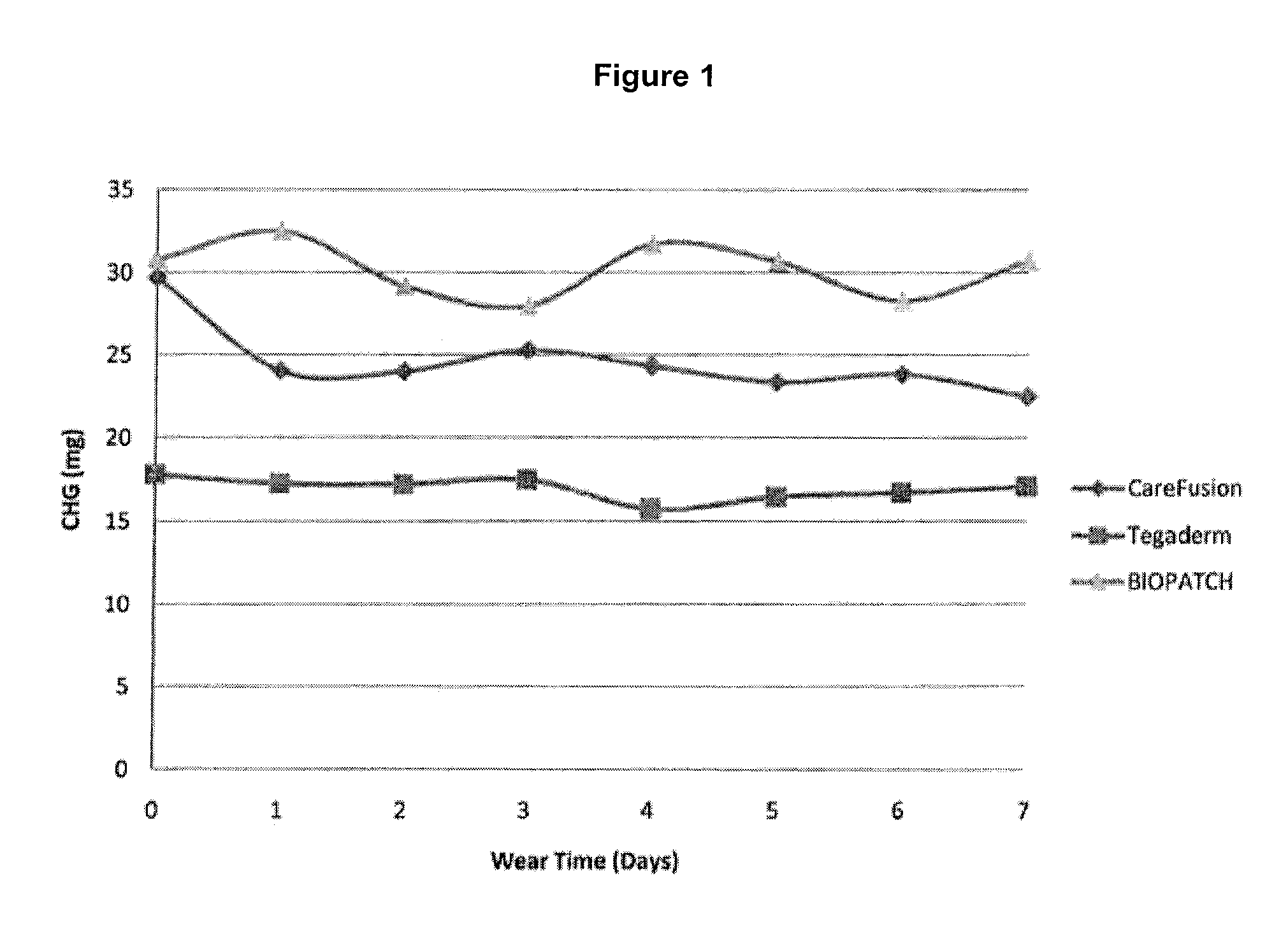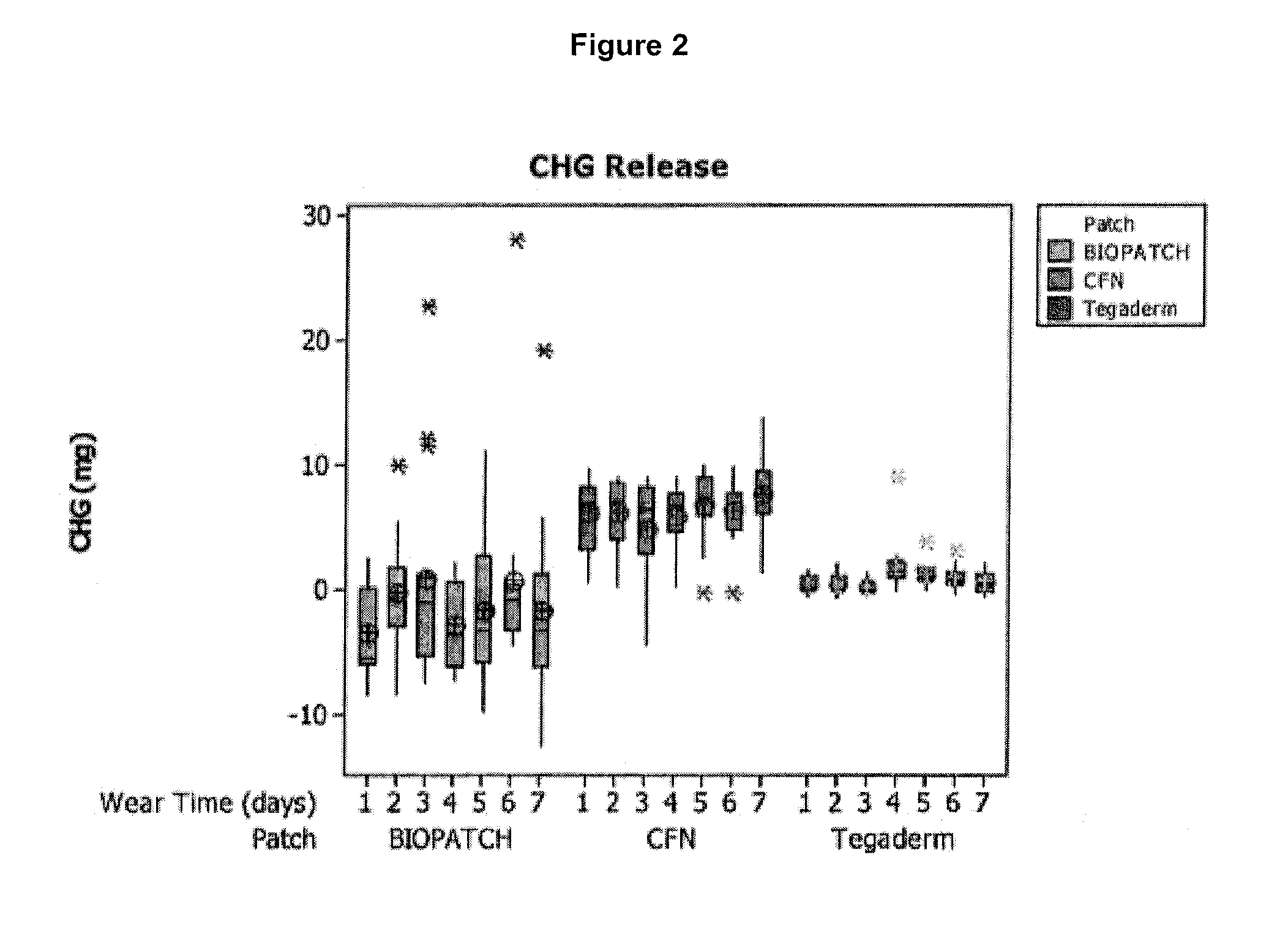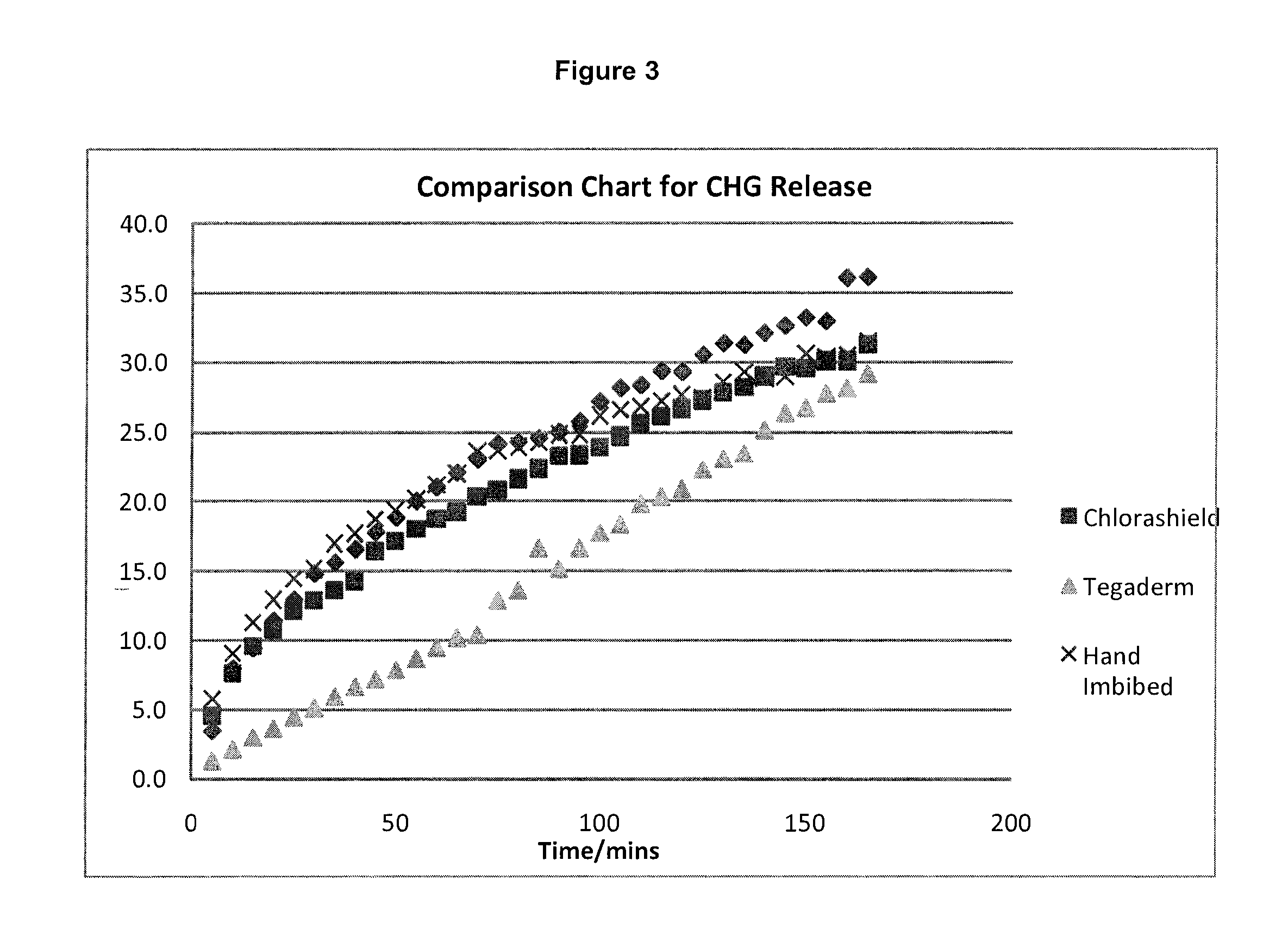Antimicrobial hydrogel polymers
- Summary
- Abstract
- Description
- Claims
- Application Information
AI Technical Summary
Benefits of technology
Problems solved by technology
Method used
Image
Examples
example 1
[0059]Step A
[0060]A hydrogel was formed by adding 35.7 g of 4-acryloylmorpholine (CAS No. 5117-12-4) to a previously-prepared aqueous mixture including 35.7 g glycerol (CAS No. 56-81-5) and 28.6 g water. The mixture was stirred for 30 minutes. A solution of crosslinker and photoinitiator was prepared by adding 0.191 g of IRR280 (PEG400 diacrylate, UCB Chemicals) to 0.0191 g of Darocur 4265 (Ciba Specialty Chemicals). This was added to the mixture comprising 4-acryloylmorpholine and stirred for one hour while covered to exclude light. 50 g of the mixture was coated on a tray lined with polyurethane film (Inspire 2301, Exopack, UK) at a coat weight of 1.4 kg / m2. The mixture was cured in the laboratory by passing the tray under a medium pressure mercury vapor ultraviolet (UV) emitting light operating at a power level of 80 W / cm, where the tray was passed under the light three times at a speed of 7 m / min. The cured gel was covered with a siliconized high density polyethylene (HDPE) top ...
example 2
[0067]Hydrogel catheter patches prepared in accordance with Example 1 were tested to determine the amount of antimicrobial agent that is released from the catheter patch over time following application to healthy skin, and compared with existing catheter patch products.
[0068]One comparative product is the Ethicon BIOPATCH® Protective Disk with CHG (product code 4151), which is a 1.9 cm (¾ inch) disk having a 1.5 mm center hole and a radial slit. The product label indicates that the amount of CHG provided in the product is 52.5 mg. The patch is formed from a urethane foam.
[0069]Another comparative product is the 3M Tegaderm CHG IV Securement Dressing (catalog number 1660), which is a 2.75×3.375 inch dressing. The product label indicates that the amount of CHG provided in the product is 15 mg. The patch is formed from a hydrogel.
[0070]The testing protocol was as follows:
[0071]Seven of each of the three different types of patches were applied to 13-15 healthy adult study subjects for a...
example 3
[0075]Hydrogel catheter patches prepared in accordance with Example 1 were tested to determine the release profile of an antimicrobial agent that is provided in a catheter patch, where the catheter patch exhibited swelling due to absorption of solvent. The antimicrobial agent was extracted using a water / methanol solvent over a period of about three hours, and the release was monitored by UV absorption.
[0076]The inventive products were compared with the 3M Tegaderm CHG IV Securement Dressing (catalog number 1660) used in Example 2.
[0077]Results of the extraction are shown in FIG. 3, and demonstrate that an initial burst of antimicrobial agent is released from the inventive products, whereas the comparative Tegaderm product did not exhibit initial burst release of the antimicrobial agent.
[0078]It will, of course, be appreciated that the above description has been given by way of example only and that modifications in detail may be made within the scope of the present invention.
[0079]T...
PUM
| Property | Measurement | Unit |
|---|---|---|
| Fraction | aaaaa | aaaaa |
| Fraction | aaaaa | aaaaa |
| Fraction | aaaaa | aaaaa |
Abstract
Description
Claims
Application Information
 Login to View More
Login to View More - R&D Engineer
- R&D Manager
- IP Professional
- Industry Leading Data Capabilities
- Powerful AI technology
- Patent DNA Extraction
Browse by: Latest US Patents, China's latest patents, Technical Efficacy Thesaurus, Application Domain, Technology Topic, Popular Technical Reports.
© 2024 PatSnap. All rights reserved.Legal|Privacy policy|Modern Slavery Act Transparency Statement|Sitemap|About US| Contact US: help@patsnap.com










